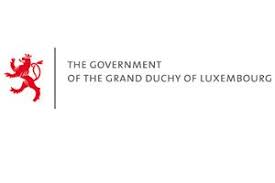accountable, for the decisions made. It is important to note that the stages may not always follow in the sequence in which they are listed below, and/or may occur simultaneously. In addition, although the stages are intended to guide the dialogue, it is important to be aware that this will not always a linear process.
•Stage 1: Identify PFM strengths and weaknesses
•Stage 2: Determine the underlying causes of strengths and weaknesses
•Stage 3: Agree the desired PFM outcomes
•Stage 4: Develop and prioritize PFM reform options
•Stage 5: Identify potential constraints to reform
•Stage 6: Implement reforms/Action plans
•Stage 7: Monitor and evaluate reform
implementation (covered in Step 10 of the PEFA process)
9.3 Reform design, planning and implementation
A crucial element of the reform dialogue is how to design, sequence and implement the reform priorities identified. Based on the seven stages approach outlined above, the reform dialogue will generally lead to a set of desired PFM outcomes around which the government’s reform priorities can be agreed and initiatives developed to address weaknesses identified in the PEFA report (supplemented by further analysis as required). What happens next will depend on the country context. In some cases, it will make sense for the government to develop a comprehensive program of reform initiatives which is formalized into a new (or revised) PFM reform strategy or action plan. More comprehensive reform strategies or action plans are most appropriate in circumstances where the government has had previous experience successfully developing and implementing reforms, where existing capacities are good, and/or where the government
has established an agreed PFM capacity development program with development partners.
In other cases, a more open-ended, less structured and iterative reform approach focused on specific high priority problems may be more appropriate. This might be the case where reform action plans have been developed previously without any impact, where commitment to reform has been variable over time and where the causes of unsatisfactory performance and progress are not well understood. In these cases, smaller, less ambitious iterative reform initiatives with a focus on continuous feedback and learning may be more effective.
PEFA assessment processes can lead to ‘standardized ‘one size fits all’ approaches to reform if applied without care. While the PEFA scoring methodology embeds good international practices, applied incorrectly, the A to D rating can lead to focusing on improving all low scores without appropriate attention to capacity and other constraints, political priorities, sequencing and importance and other local circumstances. It is therefore paramount that PFM reform action plans are adapted to the country context and that findings from the PEFA report are interpreted and used in a way that reflect the circumstances and priorities of the country in which they are applied.
PFM reform will not succeed without a solid technical foundation. However, equally, technically sound reform initiatives will not succeed without adhering to the following principles:
•Non-technical factors of ownership and interest must be understood, factored in and worked on continuously.
•Other diagnostic analyses including for example FTEs, fiduciary risk analyses, etc. may provide additional information.
•Broader stakeholders’ groups should be involved before, during reform design, implementation and evaluation.
•Agility and speed in the assessment process are essential to relevance and impact.
PEFA Handbook Volume 1: The PEFA Assessment Process – Planning, Managing and Using PEFA





